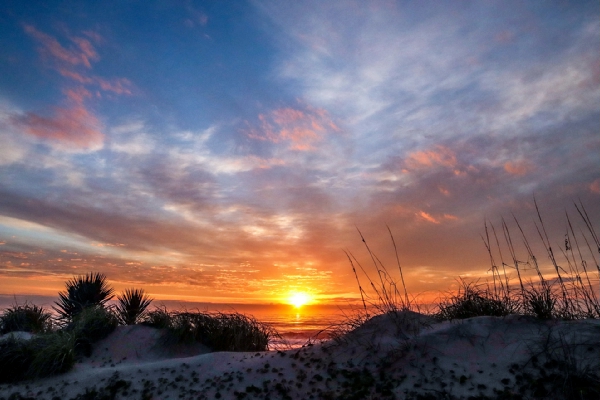Defining the Differences Among the Bay, Gulf, Ocean & Sea
While the defining characteristic among most bodies of water is size, there is a bit more to it

Do you find that the simplest of questions are sometimes the ones that stump you the most? I do. As a mom to two young children, I find myself trying to explain complicated subjects in simple terms all the time. For example, just the other day, I was trying to explain the exact difference between ocean and sea. I was surprised at myself: “…I think one is bigger,” I said.
To be fair, I wasn’t wrong, per se. While the defining characteristic among most bodies of water is, in fact, size, there is a bit more to it.
The term “ocean,” as defined by Merriam-Webster, is ”the whole body of saltwater that covers nearly three-fourths of the surface of the earth.” Comprising 1.3 billion cubic kilometers of water, this is the global body of water that covers roughly 71% of the earth. We often hear and speak of the ocean as it’s divided into five components: Arctic, Atlantic, Indian, Pacific and Southern (Antarctic). While these are often referred to as individual oceans (plural), there is no real barrier separating them. Because these are all connected, there is truly only one ocean (singular).
Never Miss An Update
Sign up for Ocean Conservancy text messages today.
Depending on whom you ask, the term “sea” could actually mean the same thing as the ocean. When someone “takes to the sea,” they could be leaving any number of ports in any number of locations. While yes, generally “sea” does refer to a smaller segment of the ocean, there are different types of seas in geology: marginal and inland. A marginal sea is one that is defined by its proximity to the land that surrounds it, such as the Mediterranean Sea, the Black Sea or even the Gulf of Mexico (more on that in a minute). Alternatively, an inland sea, while also shallow, is—you guessed it—more inland and covers part of a continent. These are also sometimes called epeiric or epicontinental seas. Epeiric or inland seas have changed throughout periods of time as the earth has evolved, but they are typically landlocked and connect to the broader ocean through a very small channel. Modern-day examples of these include the Baltic Sea and the Hudson Bay.
If you’re anything like me, you may now be thinking, “How are the GULF of Mexico and Hudson BAY also seas”? This is one of those “yes, and” situations. Both bays and gulfs are also part of a sea or ocean. A bay is a broad, recessed coastal inlet where the land curves inward. There is a coastline on three sides of a bay. A gulf is a more defined and deeper inlet with the entrance more enclosed than a bay.
And that’s just the surface! Who knew such a simple question could have such a complex answer? For now, my son seems satisfied with my original answer, and I can’t wait to sea what questions he has next.
If you’re ready to learn more, find out the difference between venom and poison or how to spot a sea otter versus a river otter.